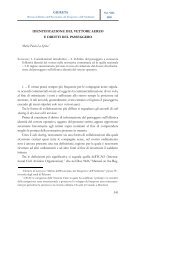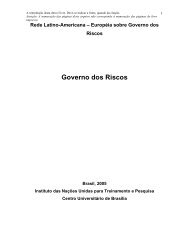Rome II and Tort Conflicts: A Missed Opportunity Abstract Contents
Rome II and Tort Conflicts: A Missed Opportunity Abstract Contents
Rome II and Tort Conflicts: A Missed Opportunity Abstract Contents
You also want an ePaper? Increase the reach of your titles
YUMPU automatically turns print PDFs into web optimized ePapers that Google loves.
SYMEON C. SYMEONIDES ROME <strong>II</strong> AND TORT CONFLICTS<br />
87<br />
inferences attached to the violation; rules that prescribe safety st<strong>and</strong>ards for work<br />
sites, buildings, <strong>and</strong> other premises; rules that impose punitive damages; <strong>and</strong> rules<br />
defining as tortious conduct such as “alienation of affections,” “interference with<br />
marriage,” or “interference with contract,” <strong>and</strong> granting an action against the actor. In<br />
contrast, loss-distributing rules are those that “prohibit, assign, or limit liability after<br />
88<br />
the tort occurs.” They include not only guest statutes, which now are virtually<br />
extinct, but also rules that define the amount of compensatory damages, <strong>and</strong> rules of<br />
interspousal immunity, parent-child immunity, worker’s compensation immunity, <strong>and</strong><br />
loss of consortium.<br />
Admittedly, the line between the two categories is not always as bright as one<br />
would like. While some tort rules are clearly conduct-regulating <strong>and</strong> others are clearly<br />
loss-distributing, there are many tort rules that do not easily fit in either category, <strong>and</strong><br />
some rules that appear to fit in both, namely they both regulate conduct <strong>and</strong> effect or<br />
affect loss distribution. Nevertheless, despite the difficulties in its application, this<br />
distinction provides a useful starting point for resolving or analyzing many tort<br />
conflicts, although in many such conflicts the distinction will not make a difference.<br />
The starting point is a presumption that conduct-regulating rules are territorially<br />
oriented <strong>and</strong> loss-distribution rules are not necessarily territorially oriented.<br />
Consequently, territorial contacts (namely the places of conduct <strong>and</strong> injury) remain<br />
relevant in conduct-regulation conflicts, while both territorial <strong>and</strong> personal contacts<br />
(i.e., the parties’ domiciles) are relevant in loss-distribution conflicts.<br />
89<br />
For reasons explained in detail elsewhere, as well as later in discussing the<br />
exceptions to the lex loci damni rule, the view of this author is that this rule produces<br />
functionally defensible results in the following patterns of cases:<br />
(1) intrastate torts involving conflicting conduct-regulation rules, regardless<br />
of where the parties are domiciled;<br />
(2) intrastate torts in which the issue is one of loss distribution <strong>and</strong> either the<br />
tortfeasor or the victim is domiciled in the state of conduct <strong>and</strong> injury; <strong>and</strong><br />
(3) cross-border torts involving either conduct-regulation or loss distribution<br />
conflicts, in which: (a) the state of injury prescribes a higher st<strong>and</strong>ard of<br />
conduct for the tortfeasor or of financial protection for the victim than the state<br />
of conduct; <strong>and</strong> (b) in which the occurrence of the injury in the former state<br />
was objectively foreseeable.<br />
In the first two patterns, the application of the law of the state of conduct <strong>and</strong><br />
87. Examples include rules providing that a person involved in a collision while driving in excess<br />
of the speed limit, or while being intoxicated, is presumed to be negligent, <strong>and</strong> rules providing<br />
that, in a rear-end vehicular collision, the driver of the rear car is presumed to be at fault.<br />
88. Padula, supra note 86, at id.<br />
89. See SYMEONIDES, THE CHOICE-OF-LAW REVOLUTION 141-263.<br />
56 AMERICAN JOURNAL OF COMPARATIVE LAW (2008) PAGE 18 OF 46



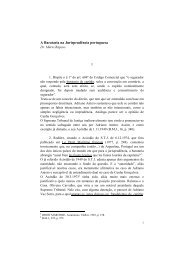

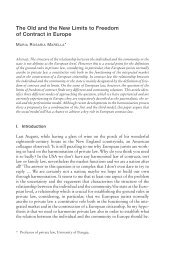

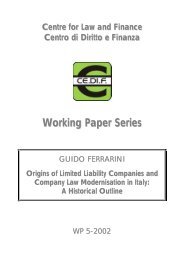
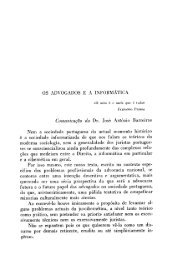
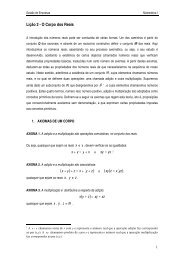

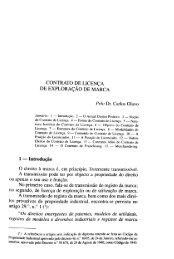
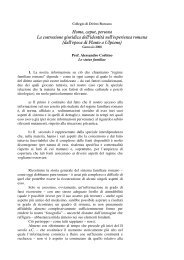
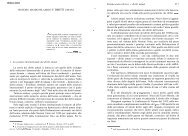

![Luigi Sapio Nozione di islām La parola “islām” [ ] è il mas.dar1 ...](https://img.yumpu.com/15836073/1/185x260/luigi-sapio-nozione-di-islam-la-parola-islam-e-il-masdar1-.jpg?quality=85)
